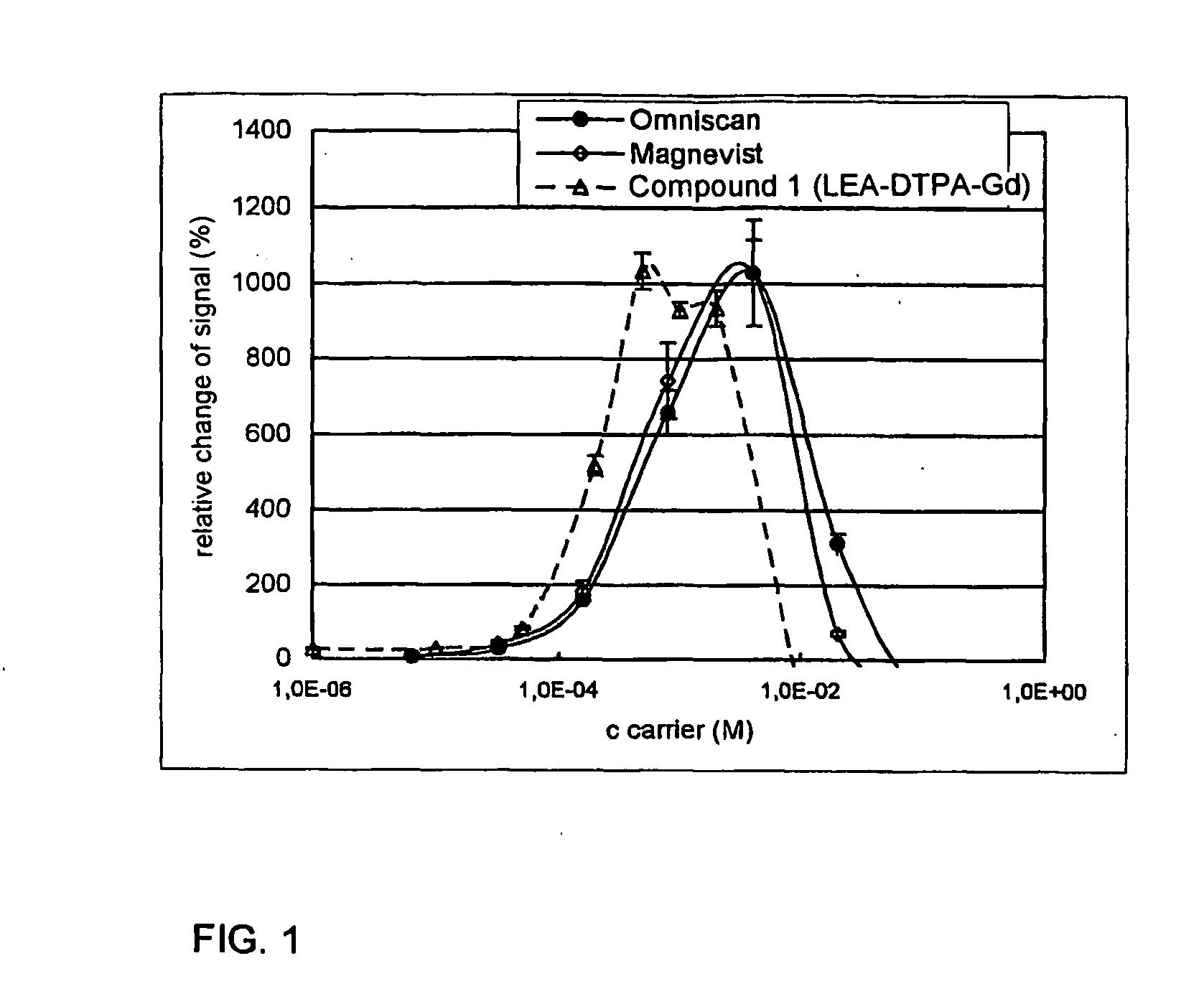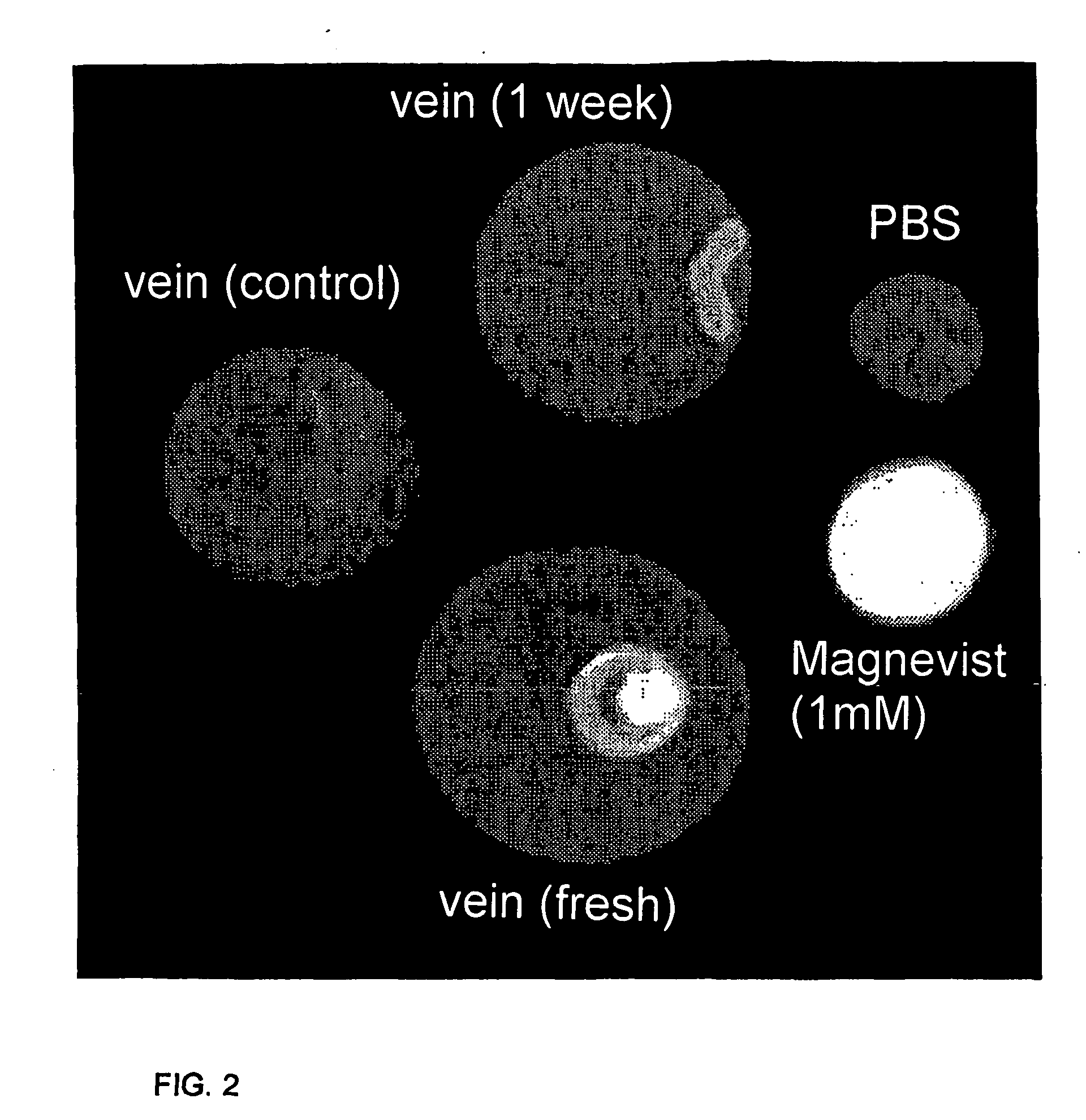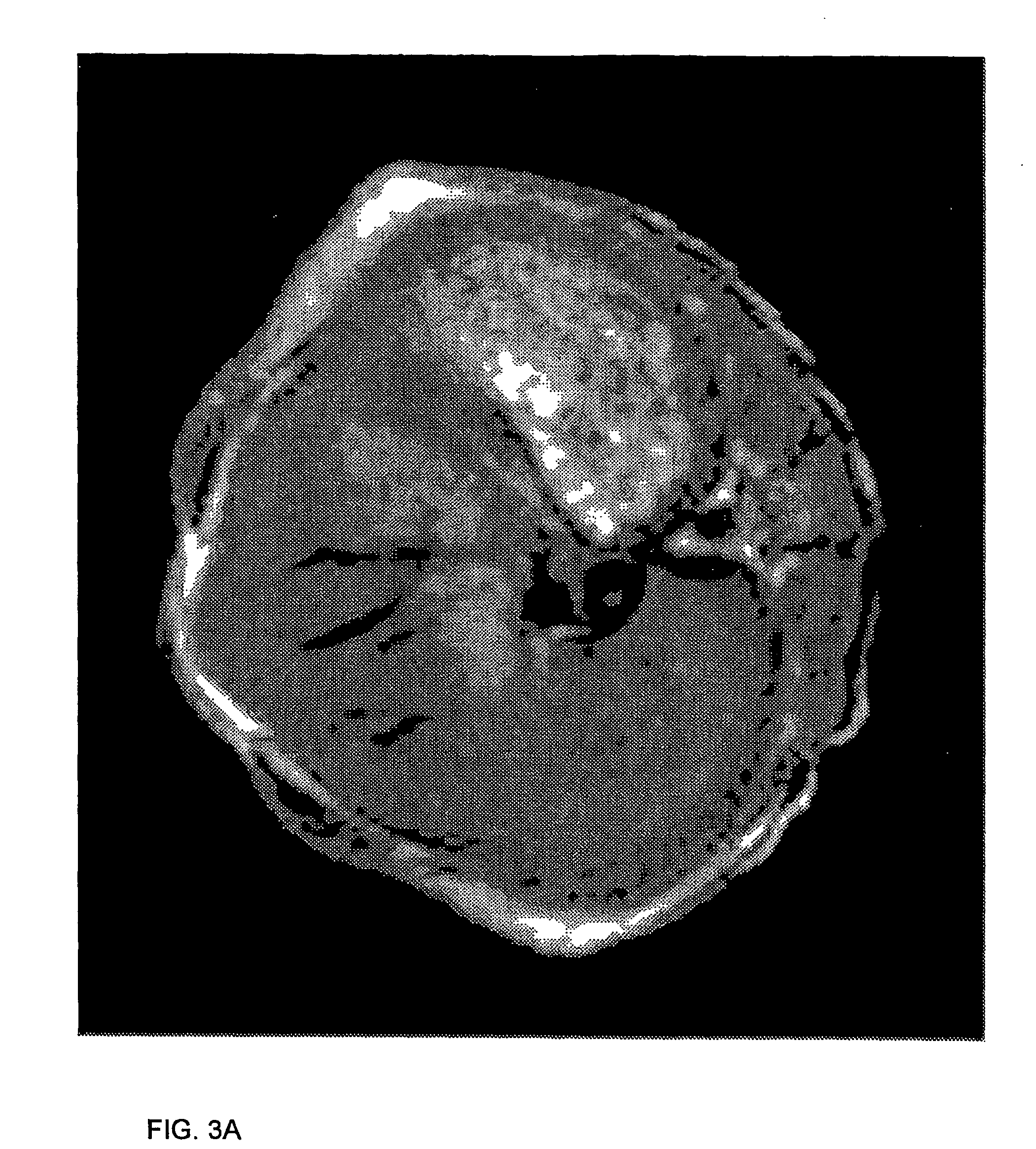Lectin conjugates
- Summary
- Abstract
- Description
- Claims
- Application Information
AI Technical Summary
Benefits of technology
Problems solved by technology
Method used
Image
Examples
example 1
Synthesis of LES-DTPA-Gd (Substance 1)
[0105] a) Production of Nitrilo-Acetic Acid Gadolinate, Tri-Sodium Salt (Gd(NTA)2Na3):
Gd2O3+6HCI→2GdCl3+3H2O
GdCl3+2Na3NTA→Gd(NTA)2NA3+3NaCl
[0106] 2.10 g of Gd2O3 (5.8 mmol) are suspended in 0.046 g HCI (37%, 1.27 mmol) and heated to boiling point. For complete dissolving further HCI (37%) is added drop by drop until the boiling solution becomes clear. The GdCl3 solution is diluted to 60 ml and then 6.38 g of Na3NTA (23.2 mmol) are added at 40° C. The solution is made up to 100 ml and the pH value is adjusted to pH=6 by adding 3 M of NaOH.
[0107] b) Conjugation of DTPABA (Diethylene Triaminopenta-Acetic Acid-Bisanhydride)
[0108] 10 mg of LEA (1.41×10−4 mmol) are dissolved in 0.22 ml of phosphate buffer (0.1 M, pH 7.4) in an Eppendorff tube. 11.2 mg of DTPABA (0.031 mmol, 220 times excess) are suspended in 0.028 ml of DMSO and then added in 4 portions to the protein solution. Between the individual additions, the pH value is adjusted to pH 8.5...
example 2
LEA-DTPA-Gd, Encapsulated in Chitosan Nanoparticles
[0113] Sodium-bis(ethylhexyl)sulfosuccinate (0.03-0.1 M) is dissolved in 40 ml of n-hexane. To this solution 100 μl of 0.1% chitosan acetic acid solution, 200 μl LEA-DTPA-Gd solution (different concentrations), 10 μl of ammonia solution and 10 μl of 0.01-1.0% glutaraldehyde solution are added under constant stirring at room temperature. The reaction solution becomes homogeneous and clear. In this way chitosan nanoparticles form with encapsulated LEA-DTPA-Gd conjugate. In the next synthesizing step the solvent is removed on the rotary evaporator and the dry residue is resuspended in 5 ml of tris-Cl buffer (pH=7.4) in the ultrasonic bath. Then 1 ml of 30% CaCl2 solution is added drop by drop. The activator precipitates in the form of calcium diethylhexyl-sulfosuccinate [Ca(DEHSS)2]. The precipitate is centrifuged for 30 minutes at 4° C. and 5000 rpm. The pellet is discarded and the residue containing the nano-particles is isolated an...
example 3
Synthesis of LATEX-LEA-DTPA-Gd Under Different Conditions
[0115] I) Production of the Substances 3.1, 3.2, 3.3 Using Prepared LEA-DTPA-Gd Conjugate:
[0116] 2 mg of polystyrene COOH (400 nm), 2 mg EDC [=1-(3-dimethylaminopropyl)-3-ethylcarbodiimide-hydrochloride] and 0.73 mg LEA-DTPA-Gd conjugate (refer to Example 1) (LEA-DTPA-Gd:EDC=1:1000) are dissolved in 0.4 ml of tridistilled water (or in phosphate buffer for Substance 3.3; LEA-DTPA-Gd:EDC=1:100). The reaction mixture is incubated for 18 h at room temperature. The solution is then centrifuged off and the residue containing the polystyrene LEA-DTPA-Gd conjugate is purified using FPLC. In the case of the Substances 3.1 and 3.3 no centrifuging takes place before the FPLC purification.
[0117] II) Production of the Conjugate with Prior Reaction of the Polymer with LEA (Substance 3.4):
[0118] The activator and the ionic impurities in the latex suspension are separated by centrifuging (3×10 min. at 4000 rpm in PBS). 36.0 mg of latex pa...
PUM
| Property | Measurement | Unit |
|---|---|---|
| Structure | aaaaa | aaaaa |
| Surface | aaaaa | aaaaa |
| Therapeutic | aaaaa | aaaaa |
Abstract
Description
Claims
Application Information
 Login to View More
Login to View More - R&D
- Intellectual Property
- Life Sciences
- Materials
- Tech Scout
- Unparalleled Data Quality
- Higher Quality Content
- 60% Fewer Hallucinations
Browse by: Latest US Patents, China's latest patents, Technical Efficacy Thesaurus, Application Domain, Technology Topic, Popular Technical Reports.
© 2025 PatSnap. All rights reserved.Legal|Privacy policy|Modern Slavery Act Transparency Statement|Sitemap|About US| Contact US: help@patsnap.com



